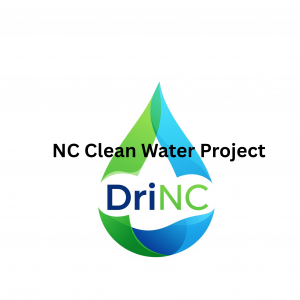DuPont and its spin-off company, Chemours, have been at the center of a prolonged chemical contamination crisis in Eastern North Carolina, particularly impacting the Cape Fear River and Grays Creek watersheds. This issue stems from decades of discharging per- and polyfluoroalkyl substances (PFAS), often referred to as “forever chemicals,” from their Fayetteville Works facility.
Duration of Dumping and Chemicals Involved
The discharge of these chemicals into the environment by DuPont (and later Chemours, which spun off from DuPont in 2015) has occurred for decades, potentially since the 1980s. Initially, chemicals like PFOA (Perfluorooctanoic acid), also known as C8, were released. PFOA was used in the production of Teflon. By 2005, DuPont was fined by the EPA for C8 contamination in other regions and committed to phasing it out by 2015.
However, DuPont then replaced PFOA with a new chemical called GenX, which has also been found to have significant health concerns. While GenX was promoted as a safer alternative due to its faster biodegradation, it has still accumulated in the environment and human bodies. Other PFAS compounds, beyond just PFOA and GenX, have also been identified.
Effects on the Cape Fear River and Grays Creek
The impact on the Cape Fear River and Grays Creek has been extensive:
Widespread Contamination: The chemicals have polluted over 100 miles of the Cape Fear River and contaminated thousands of private wells in counties like Cumberland, Bladen, Robeson, Sampson, New Hanover, Brunswick, Pender, and Columbus.
Persistent Presence: PFAS are notoriously long-lasting and do not break down easily, earning them the “forever chemicals” moniker. Once in the water supply, they are difficult to remove and can bond with pipes, microbes, plants, animals, and sediments.
Air and Groundwater Contamination: Beyond direct river discharge, PFAS emissions from smokestacks and waste have traveled through the air and seeped into groundwater, further spreading the contamination.
Impact on Wildlife: The contamination poses risks to birds and other wildlife dependent on the Cape Fear River ecosystem.
Health Concerns
The health concerns associated with exposure to PFAS, including GenX and PFOA, are significant and have been linked to a range of serious issues:
Cancers: Studies have shown associations with increased risks of certain cancers, including liver, pancreatic, testicular, and kidney cancers.
Liver and Kidney Damage: Laboratory studies in animals indicate that the liver and kidneys are sensitive to GenX and other PFAS.
Immune System Dysfunction: Exposure can reduce the body’s ability to fight infections and may lead to reduced vaccine response.
Reproductive and Developmental Issues: These can include decreased fertility, increased high blood pressure in pregnant women, low birth weight, accelerated puberty, bone variations, and behavioral changes in children.
Hormone Disruption: PFAS can interfere with the body’s natural hormones.
Increased Cholesterol and Obesity Risk: Elevated cholesterol levels and an increased risk of obesity have also been linked to PFAS exposure.
Residents in the affected areas, particularly those in the Lower Cape Fear region, have been found to have PFAS levels in their bodies at twice the levels of the general U.S. population.
Other Concerns in Eastern NC Water Supplies
Beyond DuPont/Chemours, other sources of water contamination in Eastern NC exist, including:
Industrial Byproducts: Other industrial facilities can contribute to contamination. For example, Elevate Textiles was found to be a significant contributor to PFAS in a city’s drinking water and wastewater supply.
Natural Contaminants: Naturally occurring substances like arsenic can enter the water supply from bedrock.
Infrastructure Issues: Lead from old pipes and fixtures can leach into drinking water.
Agricultural Runoff: While not directly linked to DuPont, agricultural runoff can contribute to other forms of water pollution.
Current Status and Legal Actions
Numerous lawsuits have been filed against DuPont and Chemours by affected residents and water utilities seeking to recover costs and damages. There has been a Consent Order between Cape Fear River Watch, the North Carolina Department of Environmental Quality (NCDEQ), and Chemours, which requires Chemours to:
Install air emissions control technology to reduce PFAS emissions.
Prevent further discharge of PFAS to the Cape Fear River.
Provide clean drinking water to affected private well users.
Assess the extent of existing contamination and develop cleanup plans.
The U.S. Environmental Protection Agency (EPA) has also finalized the first-ever federal drinking water standards for several PFAS, including GenX, putting pressure on public water systems to comply. Despite these efforts, thousands of people in North Carolina are still facing the challenge of contaminated water, and the long-term health and environmental consequences continue to be a significant concern. The United Nations has even criticized the U.S. for its perceived lack of action in combating these “forever chemicals” in North Carolina’s drinking water.
Sources:
Audubon. “North Carolina’s Cape Fear River Is a ‘Forever Chemical’ Hotspot—What Does That Mean for Its Birds and People?”
NC DOJ. “Attorney General Josh Stein Takes Legal Action Against DuPont Over PFAS Pollution.”
Cohen Milstein. “Cape Fear River PFAS Litigation – Carey et al v. E. I. Du Pont De Nemours and Co., Inc., et al. Cape Fear River, NC Water.”
Environmental Working Group (EWG). “State ‘forever chemicals’ spotlight: North Carolina’s drinking water contamination.”
McGowan Hood. “As DuPont Dumps New Chemical into Waterways, Local Health Issues Surface.”
NCDHHS. “GenX and other PFAS in the Cape Fear River Basin.”
Cape Fear Public Utility Authority. “Emerging Contaminants.”
CityView NC. “County files lawsuit against Chemours and DuPont.”
EcoWatch. “Will Cape Fear Become the Next Flint, Michigan as DuPont Dumps GenX Into River?”
North Carolina Health News. “GenX – An Interactive Timeline.”
Clean Cape Fear. “Timeline of PFAS in NC.”
Courthouse News Service. “United Nations says US slacking on combating forever chemicals in North Carolina drinking water.”
Southern Environmental Law Center (SELC). “SELC objects to Chemours and DuPont hiding information about their toxic PFAS pollution.”
Coastal Review. “Chemours, DuPont move to keep court records sealed.”

